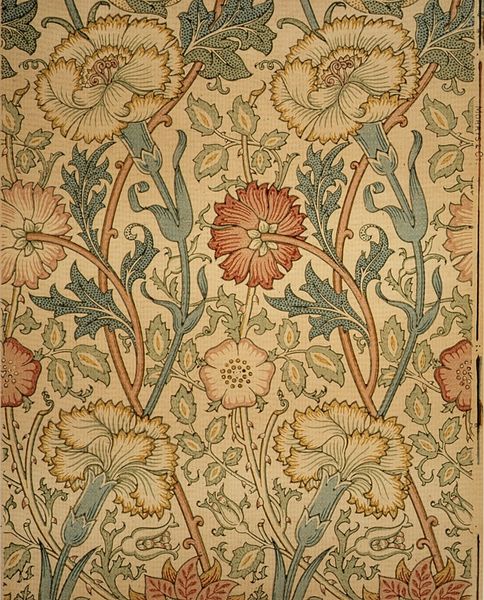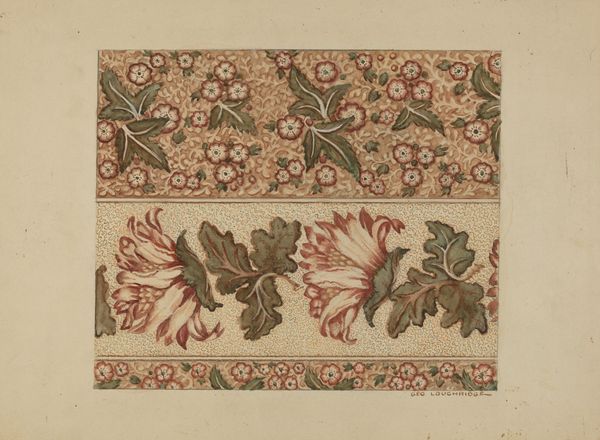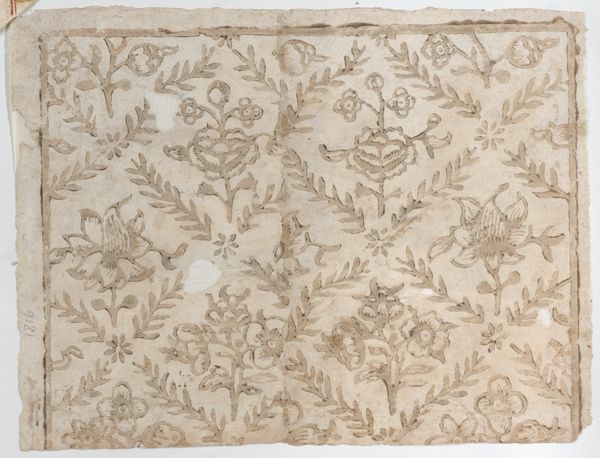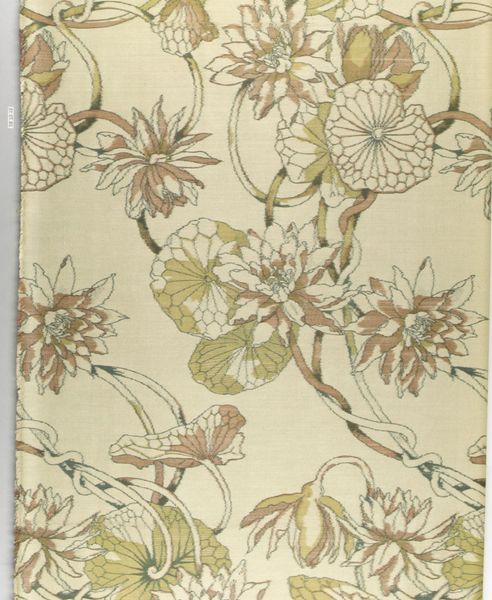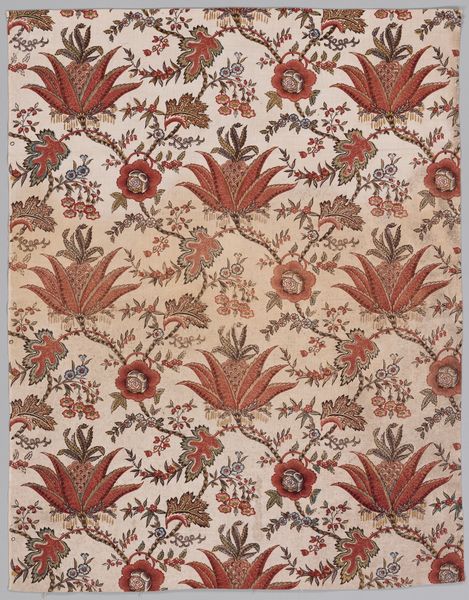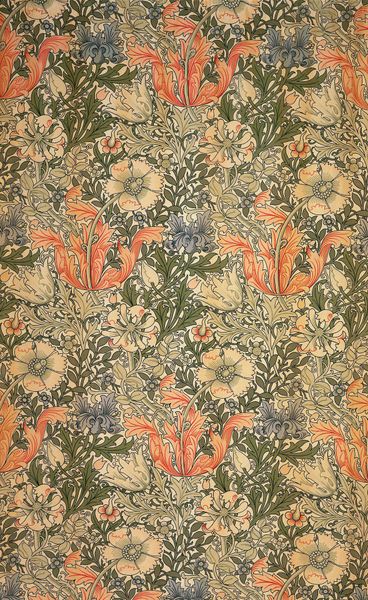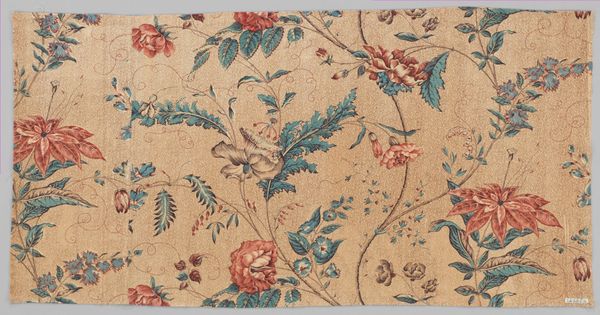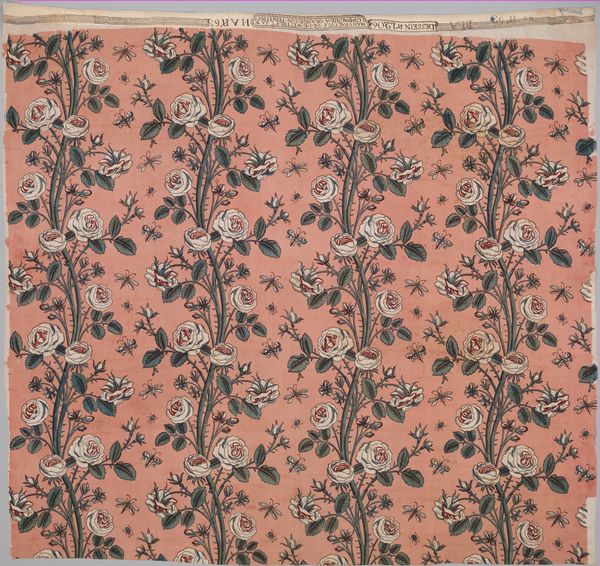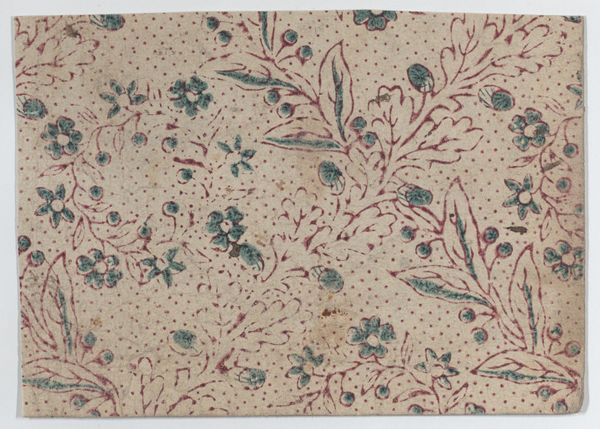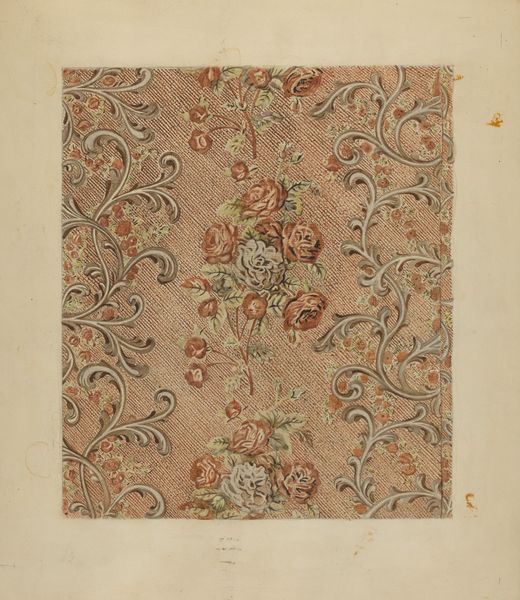
fibre-art, textile
#
fibre-art
#
textile
#
organic pattern
#
textile design
#
decorative-art
Dimensions: 27 1/4 x 19 in. (69.22 x 48.26 cm)
Copyright: Public Domain
Curator: My eye is drawn to the "Chin\u00e9 piece," a textile housed here at the Minneapolis Institute of Art. Dating back to the 19th century, it beautifully exemplifies textile design from that period. Editor: It feels simultaneously soothing and busy. The colors are muted, almost like a faded photograph, but the repetition of the floral patterns creates a sense of vibrant energy. What can you tell me about the Arts and Crafts movement influences here? Curator: The Arts and Crafts movement valued handcrafted items that stood in stark contrast to mass-produced goods from the Industrial Revolution. The piece showcases the meticulous attention to detail inherent in hand-woven textiles, something highly regarded by proponents of the movement. Think William Morris and the celebration of craftsmanship over mechanized production. Editor: Right, and I wonder how the emphasis on natural motifs intertwined with notions of femininity and domesticity in that period. Textile arts, often relegated to the domestic sphere, frequently lacked the visibility and critical acclaim afforded to male-dominated art forms like painting and sculpture. Curator: Precisely. Recognizing textiles like this "Chin\u00e9 piece" means challenging this conventional hierarchy. We see in this fabric an emphasis on organic patterns. In that respect, these pieces blur traditional boundaries between “fine art” and “decorative art." This elevates textile design. The medium isn't only silk and fibre art, it also contains history, gender politics, and artistry that speak to its cultural significance. Editor: Viewing this artwork within that intersectional lens really illuminates the politics embedded within such seemingly simple designs. By appreciating the labor, artistry, and historical context behind this piece, we reclaim its value and confront the institutional biases that have historically marginalized textile art. The very act of exhibiting this changes how we perceive textile arts as a whole, and can offer inspiration to the decolonization of art historical study. Curator: A vital point! When we view the work through the intersection of social history and artistic intent, we develop a more complete picture. It encourages new discussion about decorative and functional objects, and provides unique insight. Editor: It reframes it. It becomes more than pretty design, but social commentary.
Comments
No comments
Be the first to comment and join the conversation on the ultimate creative platform.
